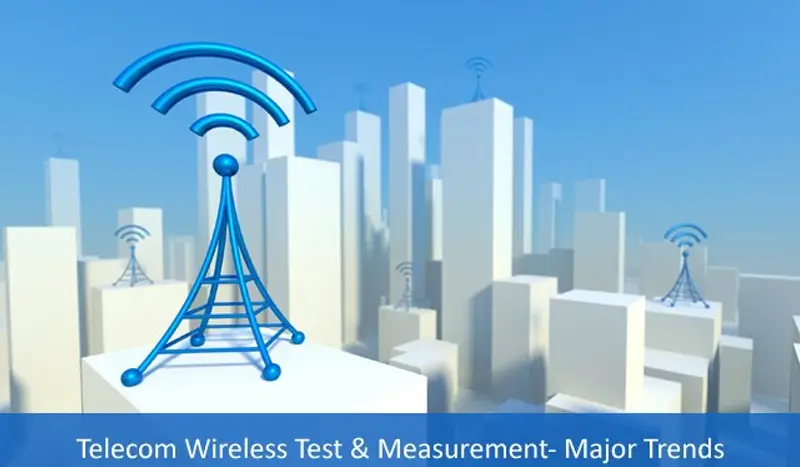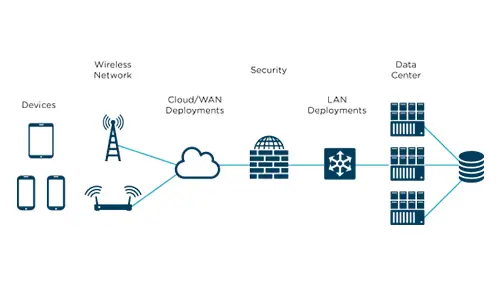Introduction
Augmented smart phone adoption, high mobility and explosive mobile data traffic growth have sparked a revolution in the wireless communication sector. The rapid change in the network circulation from voice to integrated voice, video, and data is encouraging the need for solutions to test performance, capacity, and network management for data traffic. Various cellular technologies from 2nd generation (2G) to 4th generation (4G) – GSM/GPRS/EGPRS, TD-SCDMA/HSPA, CDMA2000, LTE and LTE-Advanced (LTE-A) and wired communication technologies, such as Ethernet and Fiber Optics, providing up to 100Gbps speed, are mainly driving the communication test and measurement market presently.
Research and development in 5th generation (5G) has also been initiated which will provide data transmission at a speed higher than that of LTE-A. Similarly, Ethernet and Fiber Optics are evolving to achieve speed up to 400Gbps and above. The recently introduced and future communication technologies are expected to drive the communication test and measurement market in next five years. Moreover, rising demand for Internet of Things (IoT) based projects are also a major driving factor of the communication test and measurement market.
5G technology
5G is a very important area of development for telecom and wireless companies. 5G has been predicated as an enabler of next-generation IoT and M2M applications such as autonomous vehicles and virtual or augmented reality.
5G will also be necessary to meet the ever-increasing demand for higher data rates and capacity.
5G will depend on proving that new radio interface technologies can deliver the throughput, latency and capacity etc. So for this New and sophisticated testing and validation techniques are required.
Deployment of NB-IoT
This is a Low Power Wide Area (LPWA) technology that transmits data intermittently, enabling connected devices that use only a small amount of data to operate with low current consumption. This can greatly improve the battery life of IoT devices.
Testing will play a vital role in ensuring the delivery of a high quality service that operates effectively within LTE bands, while mitigating interference from other devices.
This introduces new test challenges due to the diverse frequencies and the potential to interfere with other LTE traffic, as well as a proliferation of IoT device types with very different traffic and application profiles.
Security war on IoT devices
The recent DDoS attack on DNS provider Dyn, driven by the MIRAI malware, was the world’s largest orchestrated hack via IoT devices.
Imagine hospitals being cut off from internet-enabled life-saving devices, or power grids plunged into darkness, leaving towns and cities without access to crucial utilities like heating and electricity. Public transport systems could grind to a halt, and traffic light systems could stop working, causing havoc on roads. However, service providers and enterprises can put measures in place to prevent attacks of this scale.
This can be achieved by implementing a modern security strategy which involves stress testing networks using the emulation of malware threats to identify weaknesses which would be targeted by cyber hackers.
Ecosystem using WiGig
High-end smartphones incorporating WiGig technology – Wi-Fi in the 60GHz spectrum.
The 60GHz spectrum offers much wider bandwidth than the current 2.4GHz and 5GHz bands, which are becoming very congested and this technology allows devices to connect at speeds of up to 8Gbps, though these will typically be over a short distance as a 60GHz signal has a range of around 10 meters at this power level.
Productivity at work could also be improved, as WiGig could enable sharing of resources between colleagues. In 2017 the number of WiGig enabled smartphones will increase as more device manufacturers look to leverage the technology.
Network Functions Virtualization(NFV)
Virtualization enables companies to break free from the shackles of rigid hardware solutions, which are typically expensive and a scarce resource. Virtual testing solutions will create demand for ‘Lab-as-as-Service’ solutions, where operators and NEMs can license testing solutions on a subscription basis, rather than paying for physical equipment.
It will also enable them to more frequently test their networks against cyber security threats, preventing potential damage to their businesses. We can expect some of the biggest operators in the world to move away from fixed lab environments and take advantage of emerging Lab-as-a-Service solutions as they look to reduce costs and centrally manage their resources.
Conclusion
The rapid transformation in telecommunications industry has resulted in rapid transformation of the ecosystem. The telecommunications market is booming, opening new markets for test and measurement products. Some of these new markets include ADSL, ATM, Internet, all optical networks, WDM, HFC, premise wiring, Gigabit Ethernet, 1394 and the list goes on. Communication Service Providers (CSPs) are working aggressively to either build new networks or enhance existing ones to support new technologies and growing end user demands.
For more information on telecom testing & measurement, please email to info@oditeksolutions.com







